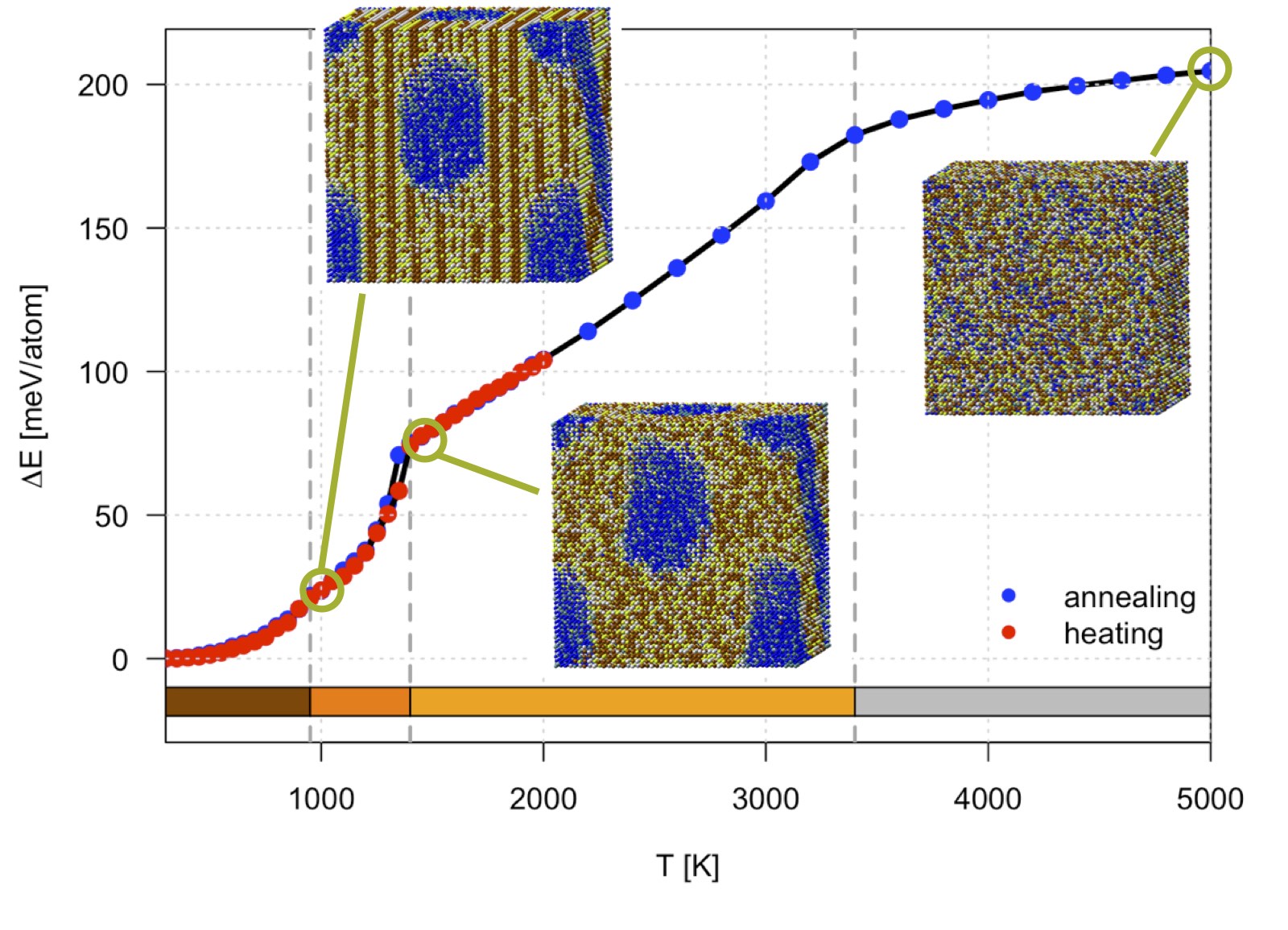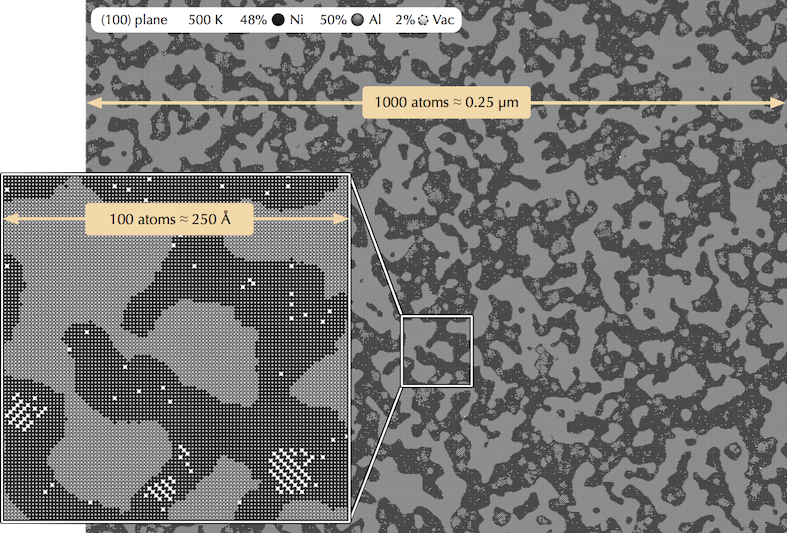MedeA UNCLE Explore Phase Stability, Bridge the Length Scales
At-a-Glance
MedeA ®[1] UNCLE (UNiversal CLuster Expansion) [2] [3] expands access to materials and properties at the meso and micro scale, while maintaining the predictive power and accuracy of ab-initio Density Functional Theory (DFT) methods. Explore order-disorder phenomena and phase segregation processes as a function of temperature and composition.
Key Benefits
- Models systems containing millions of atoms with DFT accuracy
- User friendly setup within MedeA Environment
- Workflow based automation of cluster expansion refinement
- Efficient handling of hundreds of input structures
- Intuitive graphical analysis and visualization
- Split and restart complex calculations
- Extend and expand existing Cluster Expansions
Cluster Expansion with MedeA UNCLE
MedeA UNCLE lets you determine stable multi-component crystal structures and rank metastable structures by enthalpy of formation, while maintaining DFT accuracy. VASP ab-initio calculations are performed on automatically chosen sets of small models to obtain effective interaction parameters. Use these in a Monte Carlo simulation to capture the configurational complexity of real materials at different temperatures.
‘On the one hand, cluster expansions are used to treat systems ranging from a few up to a million atoms without giving up the accuracy of modern DFT calculations. On the other hand, Monte Carlo simulations permit us to study finite-temperature properties such as short range order phenomena or mixing enthalpies.’
Stefan Müller (introduction of [3])

Ground state diagram (convex hull) for the Cr-Ni system
Tight integration with MedeA’s job control guarantees ease of use, stability, and fault tolerance. Monitor progress of these fully automated calculations, and use graphical tools to readily visualize results.

Monte Carlo temperature profile (heating and cooling curves) and simulation cells for a 5 component high-entropy alloy
Properties from MedeA UNCLE
- Ground state diagram (convex hull)
- Structures of stable phases
- Vacancy concentrations
- Miscibility
- Random mixing energy
- Phase stability as a function of temperature and concentration
- Solubility
- Order-disorder transition temperature
- Microstructure
- Short range order parameter
- Surface segregation
- Surface coverage of adsorbents
Computational Characteristics
- Use Genetic Algorithm or Compressive Sensing
- Full integration with MedeA VASP and other modules
- High-throughput using the MedeA JobServer

NiAl alloy: (100) cut through a 1000 x 1000 x 1000 simulation cell superlattice with 2% constitutional vacancies at T = 500K.
Required Modules
- MedeA Environment
- MedeA VASP
Find Out More
Learn more about MedeA UNCLE applications and examples by watching the webinar MedeA UNCLE: Atomistic Studies of Crystalline Systems at Higher Scales.
Find out more by visiting the Materials Design Application Notes:
- Adaptive Crystal Structures of Au-Cu Alloy
- Structure and Bonding of Boron Carbide
| [1] | MedeA and Materials Design are registered trademarks of Materials Design, Inc. |
| [2] | D Lerch, O Wieckhorst, G L W Hart, R W Forcade, and S Müller, Modelling and Simulation in Materials Science and Engineering 17, no. 5 (June 4, 2009): 055003. |
| [3] | Stefan Müller, “Bulk and Surface Ordering Phenomena in Binary Metal Alloys”, Journal of Physics: Condensed Matter 15, no. 34 (August 15, 2003): R1429–R1500. |
| download: | pdf |
|---|